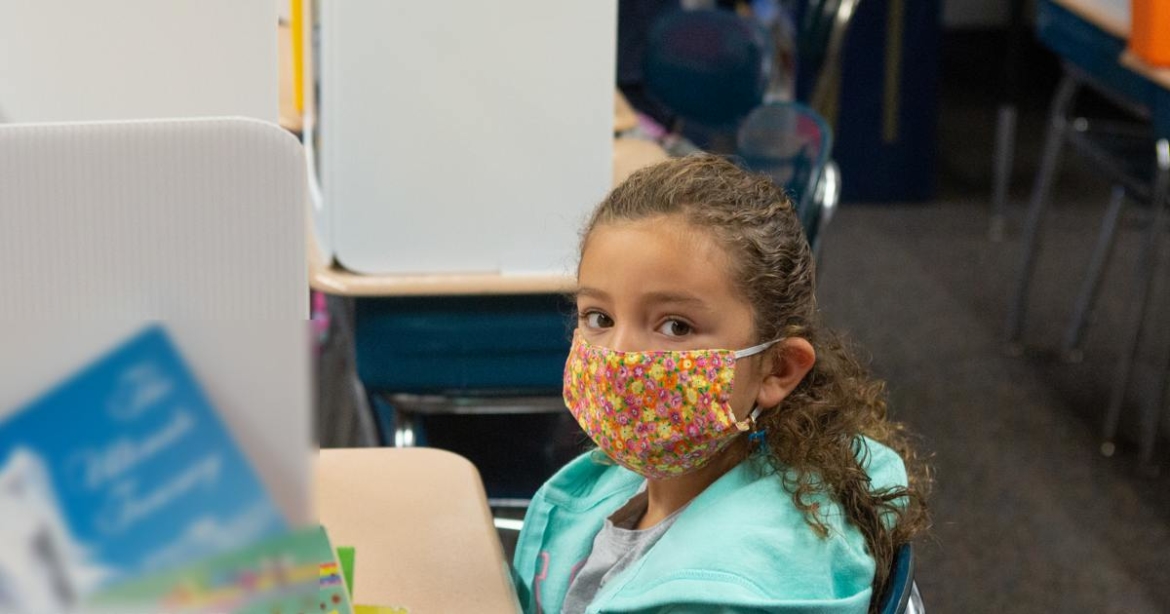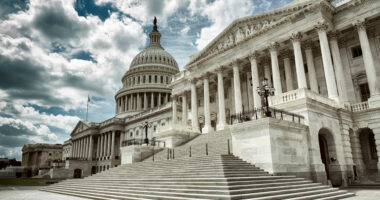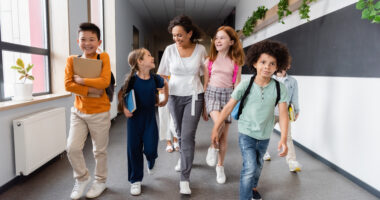NAESP Releases Results Of Midyear National Principal Survey On Covid-19 In Schools
Since the 2020-2021 school year began, just over half of respondents have had to change their learning mode. Top concerns remain safety, attendance, funding, and learning loss. A majority, though, have quarantine protocols in place and know where to get and how to use data specific to their regions or states.

Alexandria, VA—January 13, 2021—Since March 2020, when the coronavirus pandemic shut down schools nationwide, the National Association of Elementary School Principals (NAESP) has looked to its members to understand what is happening on the ground in schools.
In March 2020, NAESP surveyed its members to learn how COVID-19 had affected their schools. In July 2020, NAESP conducted a follow-up survey to gain insights into how principals were viewing school reopenings. Now, at the midway point in the school year, NAESP has once again reached out to its members to gain insight into how schools are safely conducting classes and whether the necessary funding is in place to appropriately respond to the impacts of the pandemic.
“The results of this survey reaffirm the enormous challenges that principals are facing in trying to lead learning communities in the middle of a pandemic,” says NAESP Executive Director L. Earl Franks, Ed.D., CAE. “Whether it is implementing procedures to keep staff and students safe, trying to ensure reliable home internet access for students, addressing student learning loss, or boosting mental health and trauma sensitivity supports for students, principals are having to do more with less. The COVID-19 relief package that Congress recently passed is a good first step to help schools in the short term, but for school leaders to appropriately respond in the coming months, additional federal support is urgently needed.”
This latest survey, conducted in late December 2020, includes 860 responses from NAESP members—elementary and middle school principals and assistant principals from across the country.
Key Findings
Respondents represent principals in rural (46 percent), suburban (40 percent), and urban (14 percent) schools with more than 75 percent reporting school enrollment of 201 to 750 students.
Overall, since beginning the 2020-2021 school year, just over half of respondents (51 percent) reported that the mode of learning—in-person, hybrid, or virtual—had changed since the first day of school.
The overwhelming majority (99 percent) reported having isolation or quarantine protocols in place in case a student or staff member shows symptoms of COVID-19. When asked whether they know where to get reliable information and data on COVID-19 cases in their regions or states and how to use the information to establish safety protocols, 55 percent reported they “strongly agree” and another 40 percent reported they “agree.”
Some other key findings relate to:
- COVID-19 Testing in Schools: Only 53 percent of respondents reported receiving training from health professionals on how to conduct in-school symptom screenings for students, while the remaining 47 percent said they had not. When asked if their school had implemented screening and testing requirements, 78 percent said they used at-home symptom screening, 49 percent said they conducted temperature checks upon entry to schools and buses, 39 percent said they conducted symptom checks upon entry to schools and buses, and 19 percent said they provided staff COVID-19 testing.
- Masking and Ventilation Mitigation Strategies: Most (95 percent) of respondents said their staff wear masks at all times, with 91 percent saying their students do. Only 59 percent reported that they have increased ventilation in classrooms, leaving 41 percent who have not been able to implement this mitigation strategy. About a quarter (23 percent) said they have moved some or all of their classrooms outside.
- Need for Funding to Address Learning Loss/Intervention Strategies: While most schools are devoting funding to personal protective equipment and enhanced cleaning protocols, nearly 25 percent don’t have funding to provide additional services, staffing, or programming to address learning loss or students who are falling behind. According to the survey, with only a finite amount of additional response funds available, resources are being spent on providing food services, remote learning, and enhanced cleaning, but only 8 percent of respondents are allocating “substantial” resources to addressing learning loss.
- Concerns About Sufficient School-Based Mental Health Services: Nearly 70 percent don’t have sufficient school-based mental health professionals to adequately serve all students in need of services.
- COVID Has Exacerbated Student Attendance Issues: 82 percent of respondents indicated the pandemic has hurt student attendance in their school or caused students to go missing (NOTE: “Attendance” for remote learning refers to logging on and participating in online classes, while attendance for in-person school refers to physically attending). According to respondents, the group of students most likely to be absent are those who had been chronically absent prior to the pandemic, followed by students who lack internet access at home, and students with disabilities.
- Academic Testing Flexibilities: When asked how the U.S. Department of Education should handle federal assessments for the school year, the majority (70 percent) of respondents said waivers should be granted to states relieving them of the requirement to administer standardized tests for the school year.
In Their Words: COVID-19 Impact on Schools
- “We already benchmark every student and progress monitor those who are showing decreased skills,” said a respondent from Illinois. “We use this data constantly to make decisions regarding what and how we instruct each child or small groups of children. To have to administer state assessments is going to be unreliable and prove to be very difficult with students who do not show up to school.”
- “We cannot hold schools and families to the same standard in the midst of a pandemic,” said a respondent from South Carolina. “Flexibility and empathy during these unchartered times is of the utmost importance. The safety of staff and students must take priority. The mental and physical wellness of staff should be considered, especially when none of us know the long-term effects of this virus. To think that we can just conduct business as usual is just not smart.”
- “We really need to consider the long term academic and emotional effects COVID will have on our students,” said a respondent from Rhode Island. “A small burst of money will not sufficiently cover the ramifications.”
- “The equity issues have always been here in rural Virginia with a high-poverty population,” said one respondent. “It has taken a pandemic for the rest of the state and nation and our legislators to notice. It’s time we work together for a solution and that more funding be provided to rural, high-poverty areas.”
- “Teachers and paraprofessionals have been our heroes throughout the pandemic,” said a respondent from New Jersey. “They have charged full steam ahead in learning new platforms and creating hybrid lessons that are challenging and engaging. They deserve our praise, admiration, and respect.”
- “Due to the pandemic, monies have been diverted to areas that normally would not be,” said a New Hampshire respondent. “The cleaning supplies have increased in price, and we have had to order 4 times the amount so far. I do hope that the federal government will take into consideration the smaller school districts in regards to funding.”
- “All employees in public schools need support not just teachers,” said one respondent from Maine. “We need help for our bus drivers, custodians, secretaries, and paraprofessionals.”
- “Current standardized testing that students have done at home have been wildly inaccurate as parents are assisting students,” said a respondent from Michigan. “If we must evaluate teachers, the student growth requirement should be eliminated. I strongly feel teacher evaluations should be waived this year as well.”




